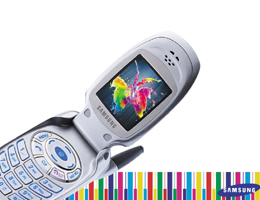Upfront: Is Japan losing it's cool?
Back to Contents of Issue: August 2004
|
|
|
|
by By David Kilburn |
|
 Is Japan losing its cool? A short while ago that question would have seemed absurd. The appetite for Japanese popular culture in Asia was boundless. Japanese singers, animation, design, cinema and literature were a thrilling new wave of experiences for the rising tide of Asian consumers.
And Japan's enormous manufacturing investment across Asia--as well as its formidable reputation for product quality, innovation, and design--set the standards Asia's aspiring corporations sought to emulate.
But new research by Japan's second largest agency, Hakuhodo Inc., suggests that Japan may be losing its edge. Especially in China.
In 2003, Hakuhodo's Annual Global HABIT research was conducted among individuals in eight cities in China: Shanghai, Beijing, Guangzhou, Dalian, Shenyang, Wuhan, Chengdu and Fuzhou, plus seventeen cities across Japan, Europe, America and other parts of Asia.
In a report published this April, Hakuhodo analyzed data from Chinese consumers aged 20-39 and found that while products made in Japan are perceived as high quality, they score lower than Korean products on "style," and "design." Japanese products were also seen to lag behind both Korean and Chinese products in "market energy" and "new breakthroughs."
The report does not address how this reversal in Japan's fortunes has come about, but it is not difficult to hypothesize why.
For example, Samsung Electronics has become one of Asia's new superstars. According to the Financial Times, four years ago Sony's market capitalization was more than twice that of Samsung. Now Sony is barely half the size of its South Korean rival and is set to deliver annual net profits that will be dwarfed by Samsung's. Samsung's mobile phone handsets have even found their way into the pockets of Nokia fans, while its flat screen TVs and monitors are elbowing out Japanese rivals. At the same time, Chinese companies such as Haier, TCL International and Lenovo are not only returning China's marketplace to Chinese brands, they are also targeting worldwide markets--and you can hear the applause such ambition generates within China.
There is no reason to suppose that Japanese marketers have lost their flair for innovation and design. But for many years they had no strong competitors. But today, Korean manufacturers in particular have moved to the cutting edge, while Chinese manufacturers have learned by example about the importance of brands--in addition to the value of design and technology.
However there is reason to believe that Japanese marketers may not always be as sensitive as they need be in China. Towards the end of last year, Toyota roused resentment when it made two stone lions, a traditional symbol of power in China, salute and bow to Toyota's Land Cruiser and Prado GX in advertisements. Toyota translated the word Prado as Badao in Chinese, a word that means high-handed or domineering. And the tagline reads: "You have to respect Badao."
To make matters worse, the lions were identified with those carved on the Marco Polo Bridge, where Japanese imperial troops initiated hostilities in China in 1937. Toyota apologized, the ads were quickly withdrawn, the agency was fired. But the ugly memory lingers on. @
Read the report and learn how the research was conducted on Hakuhodo's Web site: www.hakuhodo.co.jp/english/ news/e/20040412.html, or: www.hakuhodo.co.jp/english/news/e/pdf/20040412.pdf |
|
Note: The function "email this page" is currently not supported for this page.





